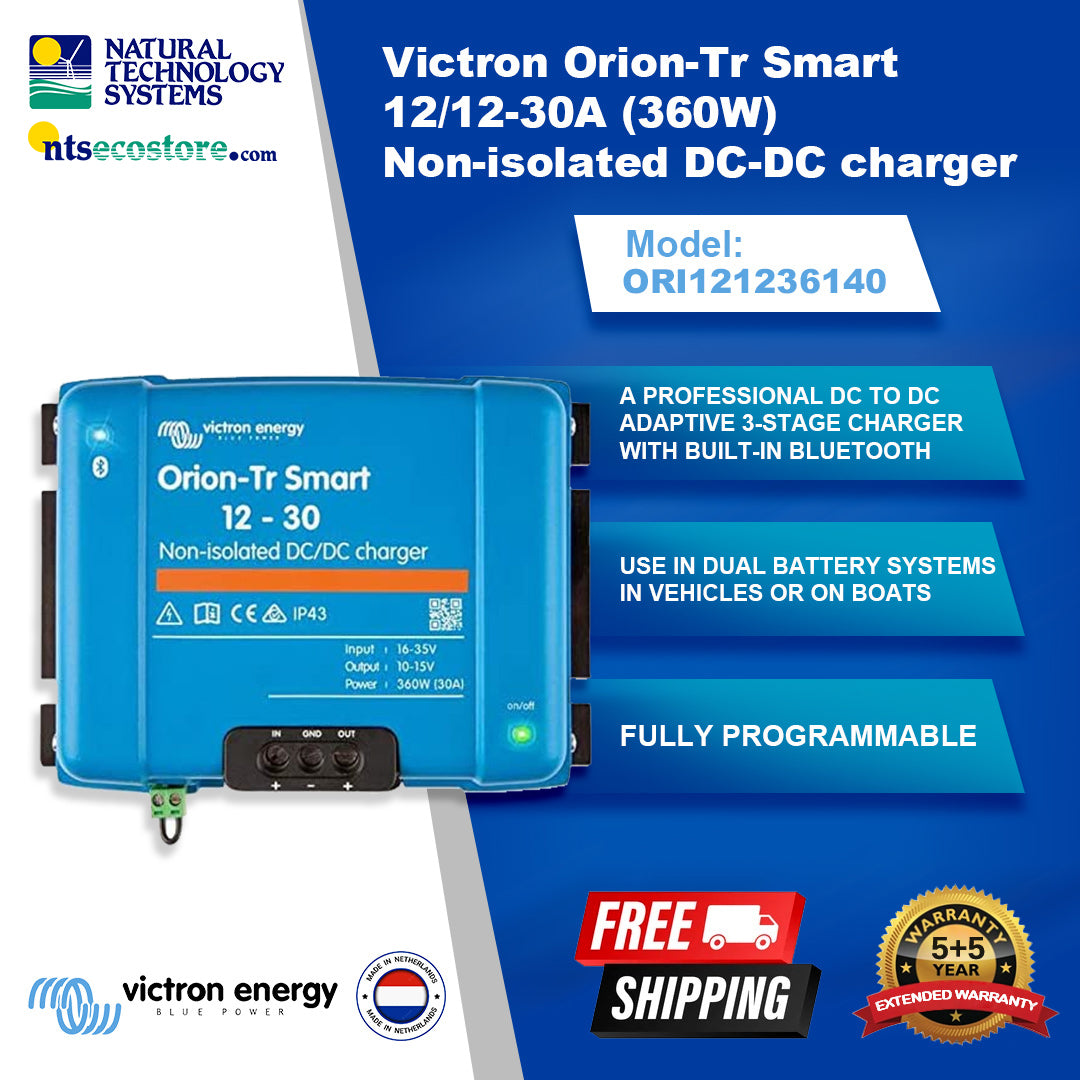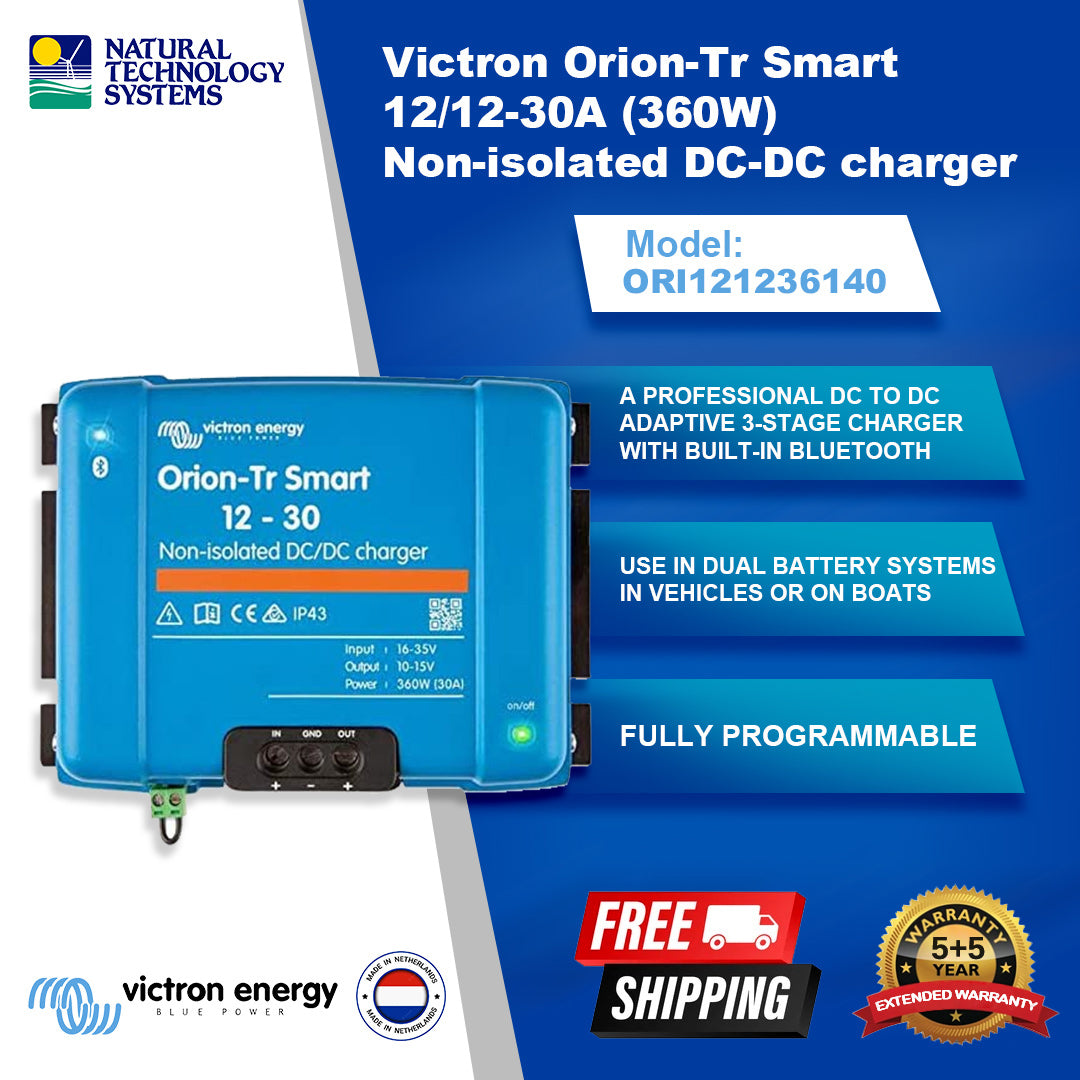Any Bluetooth-enabled smartphone, tablet, or other device can be used to monitor, change settings, and update the charger when new software features become available.
Fully programmable:
Battery charge algorithm (configurable) or fixed output.
Smart alternator compatibility: engine running detection mechanism.
Adaptive 3-stage charge algorithm: bulk – absorption – float:
For lead acid batteries it is important that during shallow discharges the absorption time is kept short in order to prevent overcharging of the battery. After a deep discharge the absorption time is automatically increased to make sure that the battery is completely recharged.
For lithium batteries absorption time is fixed, default 2 hours.
Alternatively, a fixed output voltage can be chosen.
Remote on-off
A remote on/off switch or relay contact can be connected to a two-pole connector. Alternatively, the H terminal (right) of the two-pole connector can be switched to battery plus, or the L terminal (left) of the two-pole connector can be switched to battery minus (or the chassis of a vehicle, for example).
All models are short circuit proof and can be paralleled to increase output current:
An unlimited number of units can be connected in parallel.
High temperature protected:
The output current will reduce at high ambient temperatures.
IP43 protection:
When installed with the screw terminals oriented downward.
Screw terminals:
No special tools are needed for installation.
Isolated DC to DC Chargers Vs Non-Isolated DC to DC Chargers:
An isolated DC-to-DC charger has one negative connection for each battery and there is no internal connection between the negatives. They are required for systems that need to be isolated which could be for a number of reasons including;
Limiting corrosion (Typically marine applications).
Preventing noise on one battery system from affecting the other battery system.
For systems that do not require isolation - either unit can be used, but the non-isolated requires one less wire to be installed.
In automotive systems, the negative of both batteries is typically connected to the chassis of the vehicle. This is a non-isolated system, therefore either unit will be suitable.
DC to DC Charger without solar regulator:
The advantage of separating the DC-DC charger from the solar regulator
The DC to DC charger can remain cheaper
Solar can be charged into the battery system simultaneously with the on-board vehicle charging
You can purchase the correct solar regulator to match your solar panels, which will provide the best efficiency for solar charging.
SPECIFICATIONS







